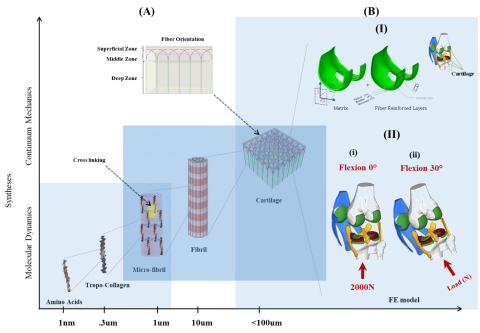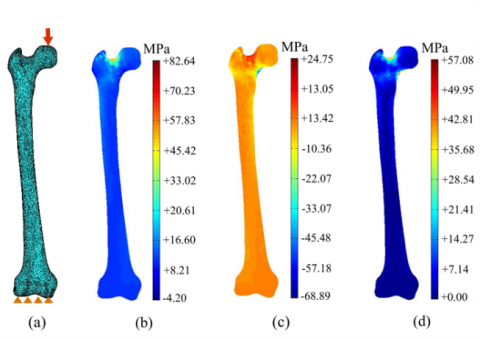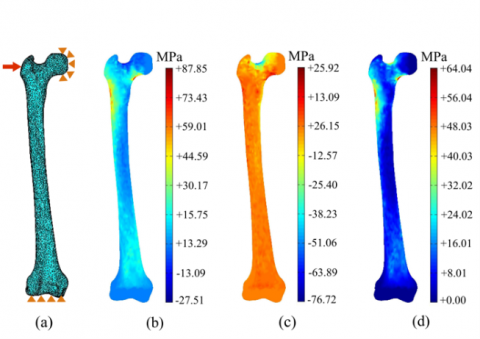Biomedical
Dr. Tanvir Faisal leads the biomedical engineering research in Mechanical Engineering Department. Dr. Faisal is interested in musculoskeletal biomechanics/orthopedics bioengineering specially in the area of knee joint mechanics and osteoporotic fracture risk. The goals of his research are to investigate the pathologies using mathematical and engineering principles so that the root causes of such pathologies can be unfolded, which is pre-requisite for therapeutic interventions and regenerative medicine.
One of his research areas is focused on unfolding the pathophysiology of osteoarthrosis (OA) and post traumatic OA (PTOA), which causes disability to military personnel, football players. Since problem domain of this research is hierarchical in nature (Fig. 1), he considers multiscale modeling approach combining atomic level to continuum using MD simulation, coarse-grained models, mesoscale model and continuum models. He integrates the image processing, linear/non-linear materials and mechanics, FEA, chemical phenomena (like adsorption, diffusion). At present he is interested in finding enzymatically mediated cartilage degradation that eventually causes OA. He is particularly investigating the role of MMPs, such as collagenase, gelatinase that primarily degrade the collagen fibril at the tropcollagen level. It is indeed required to identify the pathomechanics of the cartilage degradation at the continuum level initiated at the fibril level, which is still not clearly understood.

Fig. 1: (a) Schematic diagram showing the hierarchical features of the articular cartilage and orientation of the collagen fibrils as function of the depth. (b) (I) tibiofemoral joint finite element model used to simulate (II) (i) tibiofemoral joint axial compression under 2000 N axial load at full extension (ii) flexed tibia to 30° relative to the fixed femur.
Dr. Faisal is also working on osteoporotic fracture risk. A sideways fall is one of the major causes that result in hip/femoral fracture in elderly population, who often suffer from osteoporosis. Due to reduced bone mass, an osteoporotic fracture often takes place associated with falling from standing height. Hence, hip fracture owing to osteoporosis is one of the key public health concerns specially for geriatric people, whose sufferings as well as the cost of treatment can be reduced if the fracture risk can be predicted a priori. The aim of this research is to assess the fracture risk probability using computational approach combining with medical imaging modalities such as CT scan, MRI etc.


Fig. 2: Single stance loading condition Fig. 3: Sideways fall loading condition
For more information about the biomedical research done at UL Lafayette, visit the Musculoskeletal Mechanics & Multiscale Materials (4M) Lab website.
